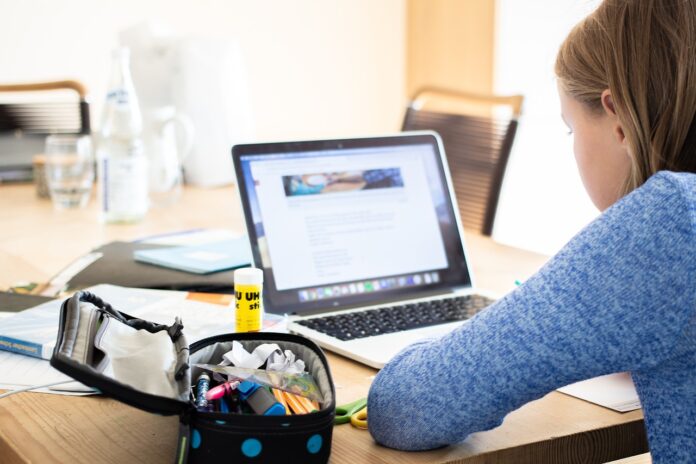Every child is wonderfully unique—and that absolutely includes kids with ADHD. If you’re homeschooling a child with ADHD, you already know it comes with its own set of joys and challenges. But here’s the good news: homeschooling can be an incredibly effective way to support your child’s learning style, needs, and strengths.
The key? Flexibility, patience, and a willingness to try different strategies until you find what works best for your child.
Some tips may click right away, others might need a little tweaking—and that’s totally okay. The goal isn’t perfection. It’s progress. Let’s dive into some practical, ADHD-friendly homeschooling strategies to help your days run smoother.
1. Start with Understanding ADHD
Before anything else, take the time to learn about ADHD. Understanding how it affects your child’s focus, energy, and emotions will help you make informed, supportive choices.
Explore trusted resources, talk to professionals, join support groups, and read up on current research. Not all information is created equal, so make sure you’re leaning on evidence-based guidance. The more you understand, the better you’ll be at guiding your child through their learning journey.
2. Let Go of the “School-at-Home” Mindset
Your homeschool doesn’t need to look like a traditional classroom. Desks, hand-raising, rigid schedules? Totally optional.
Instead, create a flexible plan that works for your child. Most kids with ADHD thrive on consistency—so build a rhythm to your day, but don’t be afraid to break it when needed. Mix in breaks, movement, snacks, and moments of downtime to keep your child engaged and regulated.
3. Customize How You Teach
One-size-fits-all doesn’t work here. Explore different learning styles—visual, auditory, kinesthetic—and adapt accordingly.
- If reading alone is a struggle, try reading aloud together.
- Practice math while bouncing on a trampoline.
- Use storytelling, music, movement, or art to teach concepts in new ways.
The more engaged your child is, the more they’ll retain—and enjoy—what they’re learning.
4. Get (and Stay) Organized Together
Kids with ADHD often benefit from structure—but that doesn’t mean everything has to be rigid.
- Create a clutter-free learning space.
- Use checklists for daily tasks.
- Break big jobs into bite-sized steps.
- Celebrate small wins when tasks are completed.
Let your child help design their routine and workspace. Involving them gives them ownership, which builds confidence and accountability.
5. Use Learning Strategies That Match Their Needs
Long lessons = wandering minds. Instead:
- Break work into short, manageable chunks.
- Set clear goals.
- Add regular movement or brain breaks.
Incorporate visual aids, hands-on tools, and multisensory learning activities. The more senses you engage, the better they’ll focus and retain information.
6. Reduce Sensory Distractions
Even the little things—like a humming fridge or movement outside a window—can be super distracting.
Try these tricks:
- Use visual barriers around their learning space.
- Limit background noise.
- Turn off visual clutter (like busy posters or toys nearby).
- Let them work in whatever space feels best: couch, floor, outside, or even standing.
If your child needs to fidget, try a wobble cushion or kick bands on a chair. The right environment makes a big difference.
7. Limit the Overwhelm
A mountain of books or a full worksheet can feel like too much all at once.
Instead, simplify:
- Show only one task at a time.
- Cover up parts of worksheets that aren’t in use.
- Avoid visual overload by removing extra pages or illustrations when not needed.
Keeping things bite-sized helps your child stay focused and feel capable.
8. Try Quiet Fidgets
Fidget tools can be incredibly helpful for kids who need to move to stay focused—just make sure they’re quiet!
Keep a small collection and rotate them to keep things fresh. You’d be surprised how a squishy ball or textured fabric can help a lesson sink in.
9. Incorporate Movement
ADHD brains need movement. So get that energy out in healthy ways!
- Jumping jacks between subjects
- Dance breaks
- Rebounders or yoga stretches
- Walking and talking lessons
Movement isn’t a distraction—it’s a learning tool.
10. Cover the Page to Focus
Too much info on one page can be overwhelming. Use a blank sheet of paper to block out anything your child doesn’t need to see right now.
Whether it’s reading or math, focusing on one section at a time helps reduce anxiety and increase attention.
11. Use Timers to Build Awareness of Time
Time can feel abstract for kids with ADHD. Visual timers—especially ones that show time “running out” with color—can make it easier to understand.
Use them to:
- Break up longer tasks
- Signal when breaks are coming
- Create gentle time limits for tasks
Over time, this helps kids develop internal time awareness and self-regulation.
12. Set Clear Boundaries for Assignments
If your child knows how to complete the work but is stalling, it’s okay to set limits.
Try something like:
“You have 20 minutes to complete this page. Let’s see how far you get!”
But remember: if your child is confused or struggling, it’s not a motivation issue—it’s a support issue. Be flexible, patient, and ready to shift gears if needed.
Final Thoughts: You’ve Got This
Homeschooling a child with ADHD isn’t always easy—but it’s full of potential. You have the freedom to build a learning environment that truly works for your child, one that honors their strengths and supports their challenges.
Will every day go perfectly? Nope. And that’s okay.
Some days will feel like magic. Others might feel messy. But every moment you spend understanding, adjusting, and showing up for your child—that’s progress. That’s love. That’s exactly what they need.
Take it one step at a time. Celebrate the small wins. Keep showing up.
You’re not just teaching reading or math—you’re teaching your child how to believe in themselves. And that’s the most powerful lesson of all.



